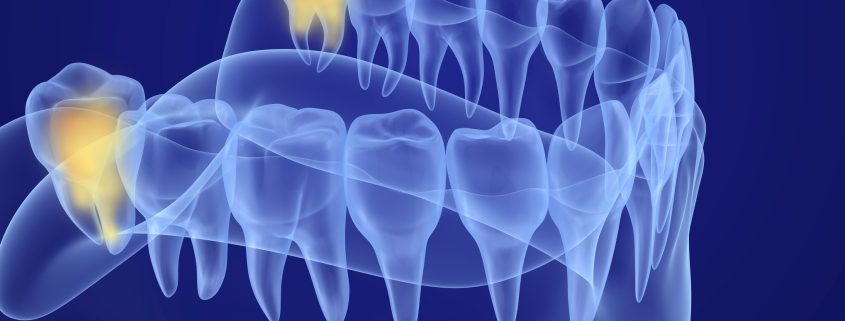During our life, our teeth continue to grow through different stages. The last tooth that completes this process is a tooth called the wisdom tooth, whose name has nothing to do with intelligence and its completion.
What is a wisdom tooth and in which part of the mouth is it located?
These teeth, which include four teeth, each behind the molars and on both sides of the upper and lower jaws, usually grow between the ages of 17 and 25.
Of course, this does not mean that wisdom teeth are fully developed and visible in all people. A wisdom tooth that cannot be seen is called a hidden wisdom tooth.
Generally, these teeth cannot grow properly and affect other teeth
What are common wisdom tooth problems?
Many people will never have any problems and discomfort with their wisdom teeth during their life, but if possible problems lead to tooth extraction as diagnosed by the doctor, it is better to do this at a young age because at this age the root of this tooth is still in the wisdom tooth. And the gum is not fixed, and surgery or pulling it is much easier and less painful.
This tooth usually causes problems when it stays under the gum surface and instead of growing vertically like other teeth, it continues to grow horizontally. This is possible because the jaw is small and the tooth has enough space to grow. It cannot happen and during growth, it causes pain and damage to the healthy tooth by pressing on the side tooth.
Sometimes these teeth may press the roots of the molars and cause a lot of pain.
Sometimes wisdom teeth not coming out completely from the gums can be painful and cause a lot of discomfort to the patient. Some people don’t have problems with their wisdom teeth in normal condition and only feel pain when chewing food and putting pressure on them.
Usually wisdom teeth can grow in four ways
* Towards the other and angular tooth, which is called the second molar
* Towards the back of the mouth and angular
* At an angle to other teeth
* Regular and vertical like other teeth
Necessary tips about wisdom teeth extraction:
Extraction of this tooth is one of the things that must be done with examination by a dentist so that this operation can be done if it is really necessary.
In general, if the wisdom tooth is in its correct place, it does not need to be extracted. But regarding the hidden wisdom tooth, due to the damage it can cause to the side teeth and also the occurrence of infections, dentists recommend that you pull the wisdom tooth. Of course, this is a general theory and the condition of the teeth should be determined by the doctor.
One of the things that make it necessary to remove wisdom teeth is the decay of wisdom teeth. Bacteria and food particles can cause many problems if they get stuck on the edge of the wisdom tooth and cause plaque (deposits around the teeth that are colorless or pale yellow) which we will mention below.
Gum diseases
Cysts and benign tumors
Abscess (accumulation of pus in the wisdom tooth or tissue around the tooth)
Tooth Decay
If these problems occur, the doctor may prescribe antibiotics for treatment, and when the antibiotics do not respond, he may extract the wisdom teeth.



